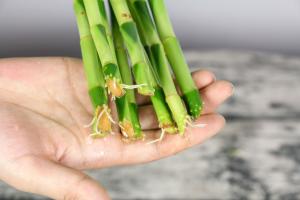How Do You Stake a Newly Planted Tree
Introduction
When it comes to planting trees, one of the common questions that arise is how to stake a newly planted tree. Staking is crucial in keeping the tree upright and preventing it from breaking due to winds or other weather conditions. In this article, we will discuss the proper steps to stake a newly planted tree.
Step 1: Assess if the Tree Needs Staking
Not all newly planted trees will require staking. It is essential to determine if the tree needs staking or not. You can do this by observing the tree's trunk and root structure. If the root system is strong and well-established, the tree may not need staking unless directly in the path of strong winds. On the contrary, if the tree has a weak root system or a slender trunk, it will require some support.
Step 2: Choose the Right Staking Materials
After determining that the tree requires staking, the next step is to select the right staking materials. The choice of materials will depend on the tree's size, the expected winds, and the duration of the staking period. In most cases, wooden stakes and tree ties are the ideal materials for staking trees. Wooden stakes should be at least two feet longer than the tree height, and the tree ties should not be too tight to prevent the tree's growth.
Step 3: Position the Stakes
The next step in staking a newly planted tree is positioning the stakes. The stakes should be inserted into the ground at least 18 inches deep and about two feet away from the tree's trunk. This distance ensures that the roots have enough space to establish themselves. The stakes should be placed on the side of the prevailing wind, so the windward side of the tree is protected.
Step 4: Tie the Tree to the Stakes
After positioning the stakes, the next step is to tie the tree to the stakes. To do this, place the tree tie loosely around the trunk and then secure it to the stakes. The tie should be tight enough to hold the tree upright but not too tight to restrict the tree's growth. It would be best if you also made sure that the tie is not in direct contact with the tree's bark to prevent damage.
Step 5: Monitor the Tree
After staking the tree, it is essential to monitor it regularly to ensure that it is growing correctly. Check the tree ties to ensure that they are not too tight and adjust the stakes if necessary. Once the tree has established itself, remove the stakes and ties to prevent them from damaging the tree's bark.
Conclusion
Staking a newly planted tree is crucial in ensuring that it grows correctly and establishes itself firmly. However, it is essential to follow the proper staking procedures to prevent damage to the tree. With this guide, you should be able to stake your newly planted tree effectively. Remember to monitor the tree regularly and adjust the stakes if necessary until the tree has established itself.

 how many times do yo...
how many times do yo... how many planted tre...
how many planted tre... how many pine trees ...
how many pine trees ... how many pecan trees...
how many pecan trees... how many plants comp...
how many plants comp... how many plants can ...
how many plants can ... how many plants and ...
how many plants and ... how many pepper plan...
how many pepper plan...































